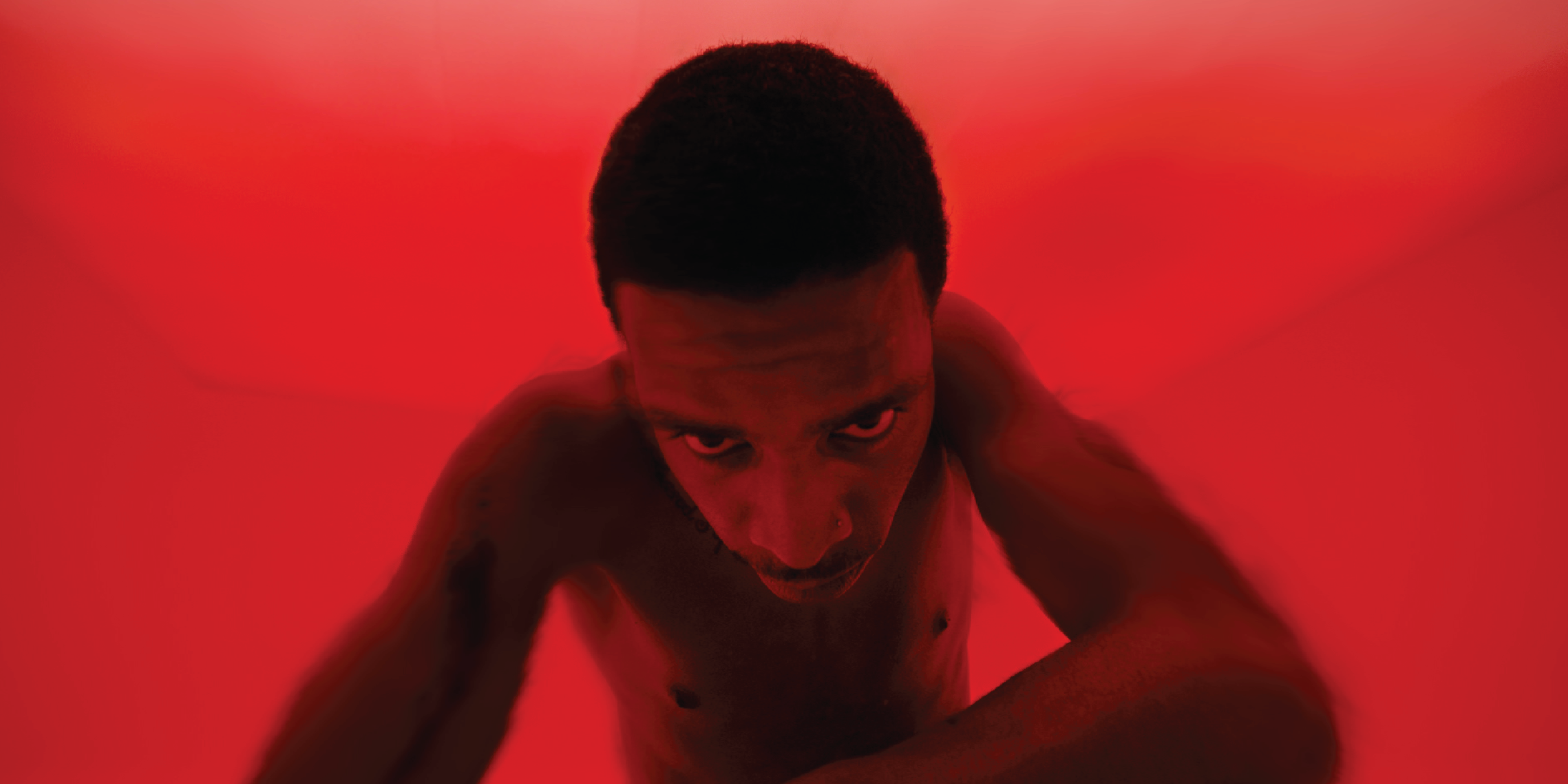“I’ve always been intrigued by the language of dance: how something pretty abstract can make you feel something which is very particular.” Director Henry Scholfield and dancer Shay Latukolan on their new short film “Lost Man.”
British director Henry Scholfield & Amsterdam-based choreographer Shay Latukolan have joined forces to create a brutalist dance film entitled “Lost Man,” a striking piece of performance caught on film which explores grief, emptiness, and the relationship between sound and movement.
Latukolan, who stars in the film, worked closely with longtime collaborator Scholfield, the veteran director behind music videos like Vossi Bop (Stormzy), Hostage (Billie Eilish), and Dua Lipa’s Break My Heart, to bring their vision to life. The result is a raw short film depicting Latukolan cavorting—at times disconcertingly, at times movingly—around a barren, clinical studio.
In the below interview, which has been edited for length and clarity, Scholfield opens up about the power of experimentation and working without commercial restraints, while Latukolan gets candid on unpacking his trauma through dance.
Henry Scholfield
Mission: How did creating a dance film where the music no longer shapes the narrative compare with directing a music video?
Henry Scholfield: It creates a different synergy between the movement, the visuals, and the soundscape. The only concern is the movement, performance, and the edit delivering on the emotional arch. Rhythm, lyrics, even musicality become much less important.
Mission: How did the experience differ from your commercial work? Did you enjoy having more creative freedom?
HS: I’ve been pretty lucky with working with some excellent creative teams and pretty chilled clients recently on my more commercial bits. That said, “a lot” would be the short answer. Creatively, for a piece like this, there’s the chance to be singular and decisive on choices. You’re still collaborating with other (great!) creative minds, but you get to try out what it’s like when the details can be decided instantly and not by committee. Maybe out of that, the intention can be more decisive.
Mission: Your mother was a dancer, did that influence the film?
HS: Not on this one in particular, but yes with regards to my understanding of movement in general and how it inspires a lot of my work. I’ve always been intrigued by the language of dance: how something pretty abstract can make you feel something that is very particular.
Mission: How has your work progressed since cutting your teeth as a street style music video director in London?
HS: One of the best things about filmmaking is that you’re always learning. I’ve had the chance to experiment a lot with different artists and concepts through my video work, and in doing so, I think I’ve discovered a lot about music, storytelling, and how they can come together to make something singular. But really, every piece you do is a bit of an experiment, or at least it should be.
Mission: Editing-wise, the film shifts dramatically towards the end. What is this meant to symbolize?
HS: Very true, it’s a shift that happens when the character is no longer controlled by his emotion and/or situation but takes control over it— he breaks away from it and eventually overcomes it.
Shay Latukolan
Mission: How have you cultivated your dance style over the years?
Shay Latukolan: I was raised by a musical family; my uncles and aunties were musicians, and there was always funk music and jazz music around my home, so it was natural at family parties or on a normal day to just dance around. I started taking classes when I was 11/12, watched a lot of Michael Jackson, a lot of music videos. Because I started so young, I never thought this was going to be my career. It was just fun. With that mindset of enjoying my dancing, I started growing and training, getting better. I didn’t know you could make money through dancing until I was 17 or 18, if not older.
Mission: What artists and choreographers have influenced you?
SL: The music artists that influenced me are James Brown, Prince, Michael Jackson, and Pharell Williams—in his producing, there was always some sort of funk, which I recognize with all these legends I mentioned. And choreographers? To be honest, I only watched dancers back in the day. I didn’t know there was such a thing as a choreographer, before I knew that I was one.
Mission: Did you tap into personal grief to help bring the performance to life?
SL: Yes. While I was dancing, the music brought me to a state of emptiness, and I felt like there was some sort of trauma that needed to be expressed. I’m not a talker, so I deal with my emotions through movement. This was a moment to express myself, my emptiness, coronavirus—a sadness that has been over us for the last two years, and my own personal experience over the years. It took me there.
Mission: How did you prepare for the shoot mentally? Do you have any pre-performance rituals?
SL: Because we didn’t have much time, there was no pre-performance ritual. I was just trying to get in my headspace to perform in such a large space, I had to give everything, so I put my mind to “I have to deliver right now.”
Mission: How much of the final film included improvisational dance?
SL: Everything! Everything was an improvisational dance. I studied the music a little, so I knew where certain things were, but the choices were all improvisational. The camera was following me
Images courtesy of Henry Scholfield and Shay Latukolan





